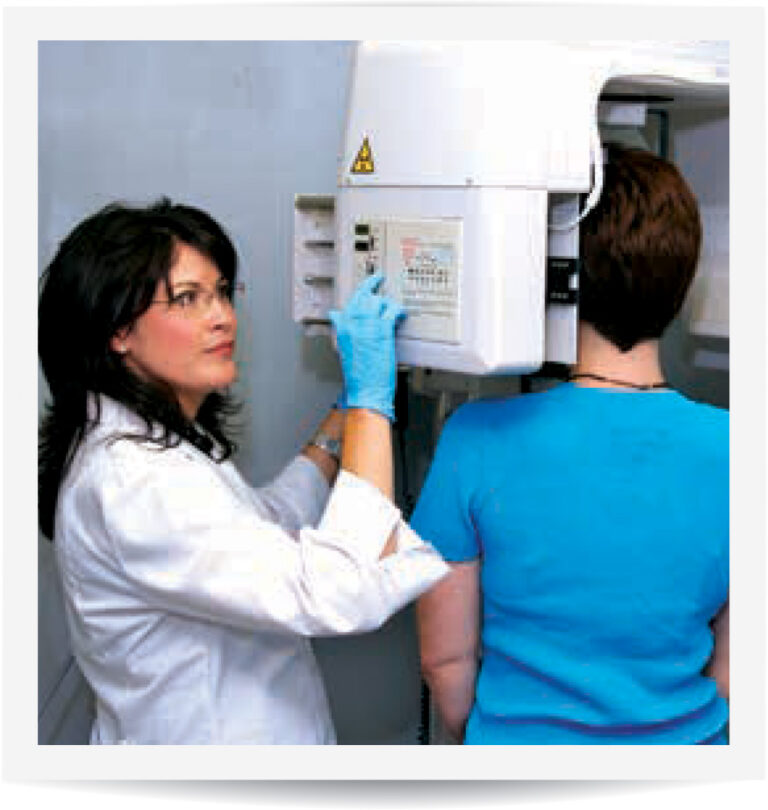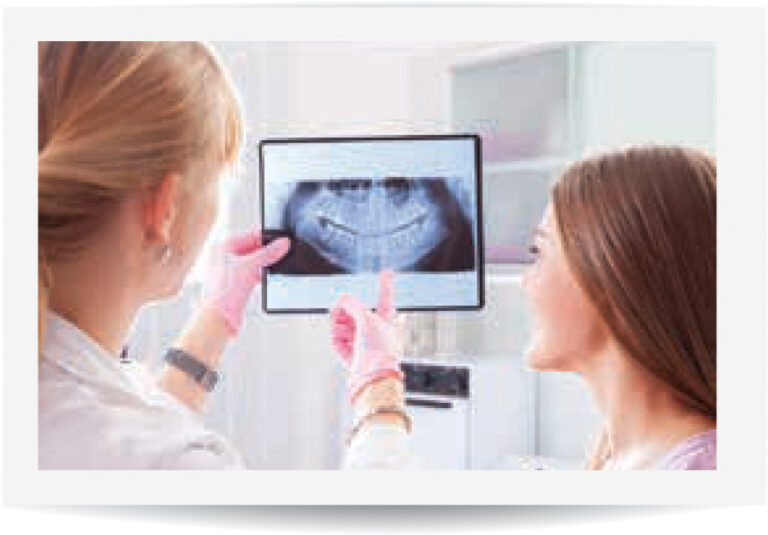Are All X-Rays The Same?
Actually there are several types of X-Rays that may be ordered by the dentist. The most common are what are referred to as “intraoral” a small film packet is placed inside your mouth. You may be asked to bite on a small cardboard tab that holds a cavity-detecting X-Ray film packet in place; or you may be asked to bite down on a small plastic device that helps align the film with the X-Ray machine.
Other types of X-Rays (called “extraoral”) are taken by placing a larger film cassette near your face. You may be either seated or standing while the film is being taken.
Your Patient Guide
X-Ray Safety
Controlling Your Gag Reflex
If you feel that you are especially prone to gagging, we can administer a special mouth rinse that temporarily numbs the soft tissue of the palate.
Your Dental Health Is Our First Concern
Because we care about maintaining your smile, dental X-Rays are an indispensable adjunct to your clinical records.
By taking them periodically we safeguard your dental health, we detect any changes or conditions early, and before they become larger problems.
If you have any additional questions or concerns about dental X-Rays, please ask. We are here to preserve your great smile!

A 360-degree panoramic x-ray machine
What About Radiation Safety?
That is a commonly asked question regarding X-Rays. Radiation, in the amounts used to expose dental X-Rays, is very small.
In fact, the average Canadian actually receives more radiation from sitting in front of the family television for a period of one year than from routine X-Rays taken at the dentist’s offfice!
Are X-Rays Necessary At Every Check-Up?
Depending upon the findings of your clinical examination, your dentist will determine when X-Rays are necessary for you.

Did You Know?
The average Canadian receives more X-Ray radiation from watching their television for a period of one year than compared to regular dental X-Rays.
What Are You Looking For When My X-Rays Are Read?
One of the obvious things we look for, of course is decay. Often, dental decay is not apparent upon visual examination – this is because the decay process often starts in-between the teeth.
In addition to decay, there are many other things the dentist looks for on your X-Rays:
- Receding bone level (a sign of periodontal disease)
- Supernumerary (extra) teeth
- Missing, impacted or unerupted teeth
- Bone cancer or bony cysts
- Early signs of osteoporosis
- Root fragments
- Root configuration
- Sinus Infection
- Abscesses of the teeth or gums
- Tooth position
- Foreign objects that may be embedded in the oral tissue
- Hairline fractures of the teeth or supporting tissues
- Tartar (hardened plaque) below the gumline
- Filling overhangs or short or open filling margins
- TMJ (jaw joint) irregularities
What If I Am Pregnant?
If you are in the first trimester of pregnancy, or think you are pregnant, please inform us. We generally avoid taking X-Rays during this period of time. If you have a very specific case needing an X-Ray, we will take every precaution to protect your unborn child from radiation.
What Precautions Are Taken?
We protect patients of all ages with a lead apron. This apron is draped over your shoulders and protects you from your neck to mid-thighs. Because the reproductive organs are also sensitive to X-Ray radiation, we are very careful to protect these areas when taking dental films.
Today’s film manufacturers make ultra-high speed films which require as little as 1/10th of a second of actual exposure.
They also permit the lowest level of radiation possible to produce clinically acceptable diagnostic X-Rays.

Why do dental personnel leave the room when my x-rays are taken?
This is because dental personnel take many films over the course of a year. As a result, they must take precautions against what is called “cumulative X-Radiation”. The safest way to ensure this is for them to stand at least six feet from the X-Ray unit for a brief fraction of a second when radiation is present.
What Our Patients Say?
We accept all major insurance plans.
We accept a number of insurance plans to help cover the cost depending on your individual needs.
